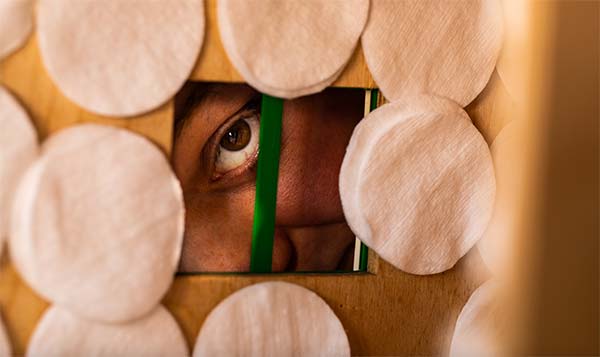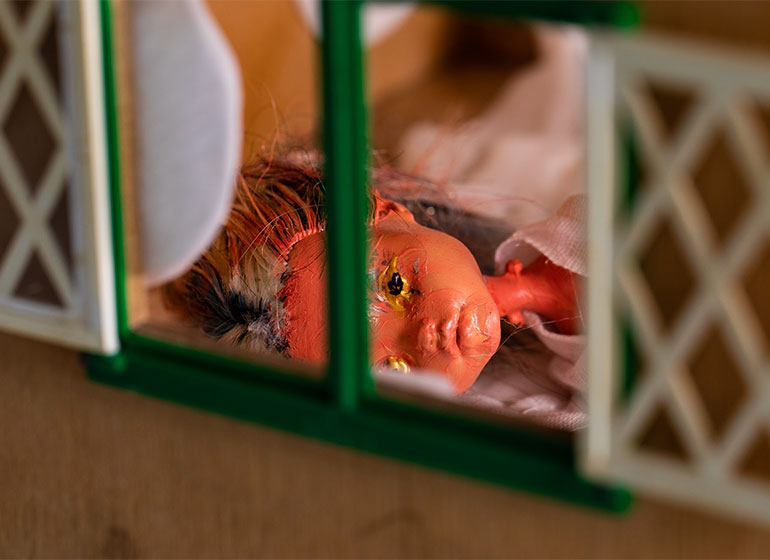After my son was born two years ago, I had to stay in hospital for a while. Despite fantastic care on the delivery ward, the postnatal wards were grim, particularly during Covid.
Us mothers were ruled by an institutional clock that dictated when we slept (rarely), woke up (early), got pain relief medication (not until the trolley came around) and when we should be up and about, regardless of pain.
Some midwives and auxiliaries were kind, but others approached us as problems to be managed, patronised, perhaps even punished.
Nobody even bothered to tell us when the hospital decided to ban our partners’ visits.
Late one night, in pain and distress, I discharged myself.
Arriving home, I was struck by the contrasts: here was a place where I felt loved and safe, and belonged.
Welcome home bunting on the wall, a bed made up downstairs until I could manage stairs, mince pies by the fire, tea in my favourite mug, the cat curled up next to the baby’s basket.
Pain relief when needed, not on somebody else’s clock. The privacy to cry, yet people around for support.
I could rest, relax and enjoy the new addition to our family. When I took a turn for the worse later that week and was offered a hospital bed, I preferred to stay at home.
This powerful contrast between the inner workings and subjective experience of an institution and the life I enjoy in my home came shortly after I finished writing a book, Deprivation of Liberty in the Shadows of the Institution
I commissioned artist Grace Currie to produce images to support some of the book’s themes.
The book tells of how, not so long ago, hundreds of thousands of people spent their lives in large institutions. These ranged from 19th century asylums and workhouses to 20th century “mental deficiency colonies”, later called “mental handicap hospitals”.
Sociolegal historian Clive Unsworth calls this the carceral era. During the second half of the 20th century, these large institutions were gradually closed and the buildings demolished or repurposed.
People now lived in the community, in a variety of settings from care homes to supported living, with some in an ordinary house or flat.
Unsworth called this the post-carceral era, an era of policies and initiatives promoting ordinary or normal lives in homes in the community, elevating autonomy, independence, person-centred care and choice and control.
The problem is that many people living in care homes, supported living or private homes do not enjoy the autonomy, independence, person-centred care, choice and control the pioneers of community living aspired to.
Some do – and we need to hold on to this, because realising this for everyone should be the central aim of social care.
The dismaying reality is that many community settings are, in effect, mini institutions.
In care settings, we talk about personalising space precisely because of a background assumption of depersonalised, institutional spaces


Some living arrangements are so restrictive that, following the a supreme court decision in 2014 case ( P v Cheshire West & Chester Council; P & Q v Surrey County Council [2014] UKSC 19), the residents are legally categorised as being deprived of their liberty.
More people are detained in Britain’s care homes than in its prisons. There are more than 80,000 people in prison in England and Wales. In 2021-22, there were 88,960 applications to authorise deprivation of liberty in nursing homes and 80,225 from residential care homes – a total of more than 168,000 applications.
While local authority backlogs meant not all the applications were authorised and some may relate to the same person, it is clear that a huge number of people are categorised as deprived of their liberty in care homes.
The problem is that we regularly conflate “homes” with “institutions”. We hope that, by calling a place a home, it sets us apart from our carceral past yet, often, the inner dynamics remain institutional.
This presents problems for courts and regulators in deciding whether a place is a private home or regulated premises.
It also means that, as community living advocates, we need to think deeply and carefully about what we mean by “ordinary homes”.
Homes and institutions are different kinds of jurisdictional space. Jurisdiction means the power to speak the law – that is, to lay down or interpret and apply the rules.
Homes are quasi-sovereign jurisdictions, where those living in them lay down the rules: an Englishman’s home is his castle. Institutions are governed by authorities, not those living in them.
This is illustrated by the Rampton smokers’ case (R (N) v Secretary of State for Health, R (E) v Nottinghamshire Healthcare NHS Trust [2009] EWCA Civ 795).Patients in high-security Rampton Hospital challenged the smoking ban, arguing that the hospital was their home so they should be allowed to smoke there.
Judges were sympathetic but observed that the freedom to do as one pleased varied depending on where one was. Although an activity might be protected from arbitrary interferences in a private home, similar protection would not apply to patients in public hospitals.
Homes are associated with autonomy, privacy and a locus of control. People living at home decide who invite in and have the freedom to come and go as they please. Small, everyday choices, such as smoking, are important. It is well documented that the erosion of such micro-choices is damaging to wellbeing and health.
So, when deciding whether a place is really a home, we should ask: does this person enjoy privacy, and have the freedom to make everyday decisions and control the threshold? Who, ultimately, makes the rules in this place?
Home is also a place of belonging and rootedness. In contrast, institutions tear up our roots and can restrict, threaten or even sever our critical relationships.
If we want a place to be a real home, we should ask whether the person is living with others they want relationships with, are able to enjoy other critical relationships fully and are free to form new relationships and offer hospitality.
And is their home in a community or truly part of one?
Homes are critical spaces for expressing and sustaining identity. Yet, in care settings, we talk about personalising somebody’s space (usually just their bedroom) precisely because of the background assumption of depersonalised, institutional spaces.
Nobody living in a regular home talks about personalising their bedroom. Yet there is an entire industry devoted to making care services look more homely. But these are simulacra; no amount of carefully positioned doilies and knick-knacks can replicate the subtle, complex and idiosyncratic aesthetics of a genuine home.
What is a home?
So what, then, is a home, and how does it differ from an institution?
The difference does not lie in the buildings, nor in legal or regulatory status, nor in what other people want to call it. Homes, as I argue in my book, are critical decision spaces for the flourishing of the self.
They are places where we are can critical decisions about where we live, who we live with and who comes into our home to support us – the kinds of decisions reflected in the right to independent living under the Convention on the Rights of Persons with Disabilities – as well as the everyday micro-decisions that make up our lives, our selves.
Being able to make critical decisions brings a sense of privacy, safety, connectedness and belonging.
Even people who are unable to decide under mental capacity law still have agency. They can still express what brings them happiness, connection and a sense of safety.
They still weave patterns of meaning into the world around them. A meaningful home for them – as for everyone – is living arrangements that reflect and sustain that.
Lucy Series is a lecturer at the School for Policy Studies, University of Bristol
Grace Currie: artwork; Helter Skelter: photography
